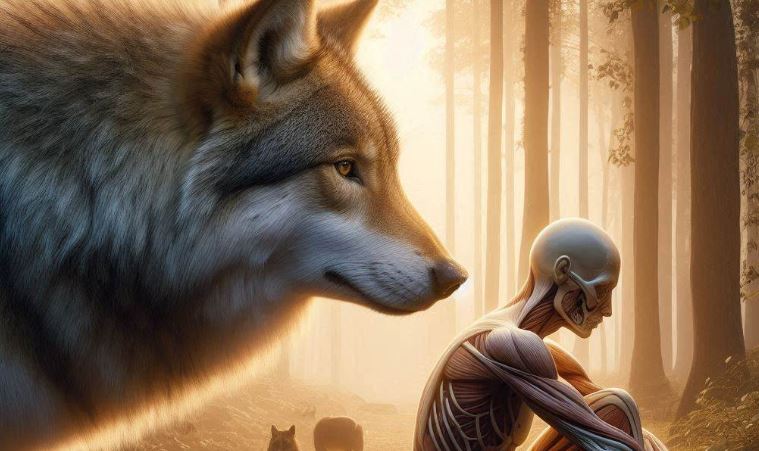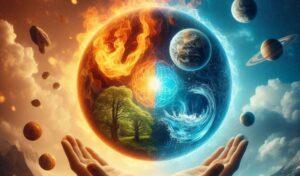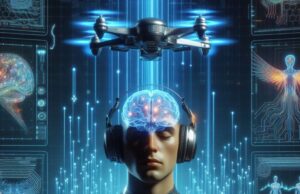Waking up one day in a world where a virus transforms people into animals could be exciting and scary as well. This strange scenario raises a whirlwind of questions and concerns. What would daily life look like? How would society adapt? Let’s dive into this wild hypothetical and explore its many facets.
What Would Cause a Virus to Turn People into Animals?
First things first, how could such a virus even exist? For a virus to transform humans into animals, it would need to drastically alter our DNA. While this idea leans heavily into science fiction, it could be fun to speculate.
- Genetic mutations: Viruses can cause mutations in the DNA of their hosts, but transforming an entire species is far beyond any natural virus’s capability.
- Advanced bioengineering: In a fictional world, maybe a rogue scientist or an accidental release from a lab could create a virus with this transformative power with gene mutation or editing.
- Magic or supernatural: If we stretch our imagination further, perhaps magic or some supernatural force could be behind this bizarre change.
How Would Society React To This Virus?
The immediate reaction would be sheer panic. Imagine seeing your neighbor turning into a deer or your friend into a fox. But after the initial chaos, how would society cope?
- Panic and Riots: The sudden transformation of individuals into animals would create widespread panic. Fear of the unknown could lead to riots, looting, and social unrest.
- Breakdown of Services: Essential services like healthcare, law enforcement, and utilities could collapse. With key personnel turning into animals, maintaining these services would become increasingly difficult.
- Economic Collapse: Businesses would shut down, supply chains would be disrupted, and economies could plummet. The financial markets would crash, leading to global economic turmoil.
- Healthcare response: Hospitals and doctors would be overwhelmed, and new medical protocols would need to be developed. Quarantine zones might be established to study and contain the virus.
- Government action: Governments would likely declare states of emergency. Policies around containment, research, and public safety would be rapidly developed.
What Would Daily Life Look Like?
If people started turning into animals, daily life would drastically change. Let’s break down some key aspects:
- Basic Needs: With the breakdown of supply chains, access to food, water, and medicine would be severely restricted. People might have to scavenge or fight for resources.
- Safety Concerns: Transformed individuals, if they retain animal instincts, could pose a danger to others. Cities could become hazardous, with predators roaming the streets.
- Transportation: With fewer human drivers, there would be a huge decline in traffic. Public transport might shut down, and cities could become eerily quiet.
- Work and economy: Businesses would face unprecedented disruptions. Essential services would need to adapt, perhaps by using robots or unaffected individuals to maintain operations.
- Education: Schools might close, with education moving entirely online. Teachers could face the challenge of teaching both human and newly transformed animal students.
- Public behavior: People would probably try to isolate themselves to avoid infection. Social media would explode with both helpful information and wild rumors.
Would Humans and Animals Coexist Peacefully?
A big concern would be how humans and transformed individuals interact. Would we see a rise in animal attacks? Or would transformed people retain their human consciousness?
- Retained consciousness: If transformed people kept their human minds, they could try to communicate and collaborate with unaffected humans.
- Animal instincts: On the flip side, if they fully embraced animal behaviors, there could be chaos as cities face a surge in wildlife activity.
- New communities: Over time, there might be new communities of humans and transformed individuals living together, finding ways to coexist.
How Would This Virus Impact the Environment?
Interestingly, this virus could have a massive impact on the environment. What changes might we see?
- Urban areas: With fewer humans, urban areas could see a resurgence of wildlife. Parks might become mini-forests, and city streets could be overrun with animals.
- Wildlife conservation: Conversely, the transformation of humans into animals could pose threats to natural ecosystems, especially if transformed individuals compete for resources.
- Climate change: Reduced human activity might lead to lower carbon emissions, potentially giving the planet a breather.
Could There Be a Cure To This Virus?
Amid all this, the burning question would be: Is there a cure?
- Scientific research: Scientists worldwide would race against time to understand the virus and develop a cure. This would involve studying the virus’s structure, transmission methods, and its effects on DNA. Researching a cure would be hindered by the lack of resources, funding, and personnel.
- Vaccination: If a cure is found, mass vaccination campaigns would be crucial. Logistics of distributing a cure to potentially millions of transformed individuals would be a monumental task.
- Mutation and Resistance: The virus could mutate, making it even harder to develop an effective cure or vaccine.
- Ethical dilemmas: Curing the virus might also pose ethical questions. Would transformed individuals want to return to human form, or would some prefer their new animal lives?
Personal Stories: How Would People Adapt?
In a world where people turn into animals, personal stories would be incredibly varied and compelling. Here are a few examples:
- Family reunions: Imagine a child recognizing their parent who has turned into a bear. This could lead to touching moments of adaptation and love.
- Friendships: Some friendships might deepen as people learn to communicate in new ways, while others might drift apart due to the changes.
- New adventures: For some, turning into an animal could be a chance for new experiences, like flying as a bird or exploring underwater as a dolphin.
What Would Long-Term Survival Look Like?
Surviving in this new world would require drastic adaptations and tough decisions.
- New Communities: People might form isolated, self-sufficient communities, but these could be rife with mistrust and fear.
- Survival of the Fittest: In a harsh, unpredictable environment, only the strongest or most adaptable might survive, leading to a brutal, Darwinian existence.
- Loss of Culture and Knowledge: With society focused on immediate survival, cultural practices, education, and the preservation of knowledge could fall by the wayside, leading to a regression in human progress.
What Lessons Could We Learn?
Such a scenario, while fictional, could teach us a lot about resilience and adaptation. What lessons might we draw from this?
Value of community: In times of crisis, community support becomes crucial. Working together, humans and transformed individuals would need to find new ways to support each other.
Environmental awareness: With the environment undergoing rapid changes, we might gain a deeper appreciation for the balance of nature.
Flexibility: The ability to adapt to sudden and drastic changes would be essential. This could lead to innovations in technology, communication, and daily life.
While the idea of a virus turning people into animals is firmly rooted in fiction, it sparks fascinating discussions about humanity, society, and our relationship with nature. The darker side reveals a scenario filled with fear, suffering, and societal collapse. The challenges would be immense, affecting every aspect of life and posing ethical, moral, and survival dilemmas.






